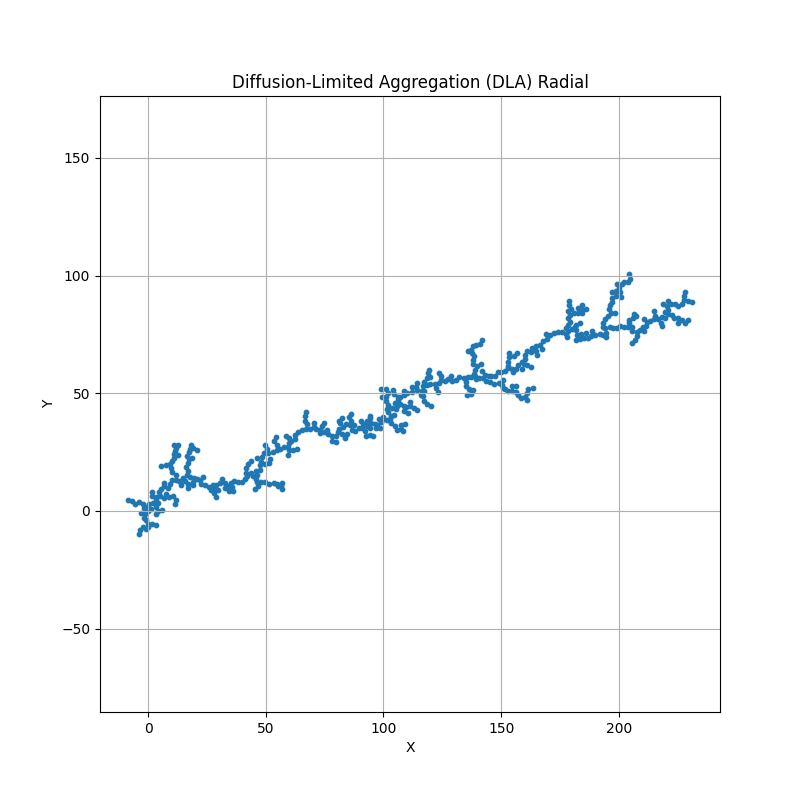This is the README file for the Diffusion-Limited Aggregation (DLA) project. In this project, we are studying and implementing the DLA algorithm to simulate the growth of fractal patterns through particle aggregation.
Diffusion-limited aggregation (DLA) is the process whereby particles undergoing a random walk due to Brownian motion cluster together to form aggregates of such particles. This theory, proposed by T.A. Witten Jr. and L.M. Sander in 1981, is applicable to aggregation in any system where diffusion is the primary means of transport in the system. DLA can be observed in many systems such as electrodeposition, Hele-Shaw flow, mineral deposits, and dielectric breakdown.
The Diffusion-Limited Aggregation (DLA) project focuses on exploring and analyzing the DLA algorithm, which is a computational model used to simulate the growth of fractal-like patterns. The algorithm starts with a seed particle, and additional particles are randomly released into the system. These particles undergo random walks, and upon contact with existing aggregates, they stick to them, gradually forming complex branching structures.
In this project, we aim to understand the underlying principles of DLA and its applications. We implement the algorithm using a programming language Python and utilize appropriate libraries or frameworks for simulations and visualization.
Before running the project, make sure you have the following requirements installed:
- Programming language of choice Python
- Libraries or frameworks necessary for simulations and visualization (e.g., NumPy, Matplotlib, etc.)
- Clone this repository to your local machine.
- Ensure that you have the required dependencies installed.
- Run the main program file
DLA_FinalCode.pywhich contains the DLA algorithm implementation and simulation logic. - Observe the fractal-like patterns as particles aggregate generated.
- Make any necessary modifications to the source code to suit your specific needs or experimentations.
Contributions to this project are welcome. If you would like to contribute, please follow these steps:
- Fork this repository.
- Create a new branch with an appropriate name for your contribution.
- Make the desired changes to the code.
- Submit a pull request, explaining the details of the changes made.
If you have any questions, suggestions, or comments regarding the project, please contact us using the following contact information:
- Name: Igor De Nadai
- Email: igoroliveiradenadai@gmail.com

